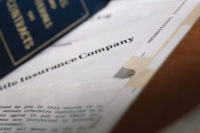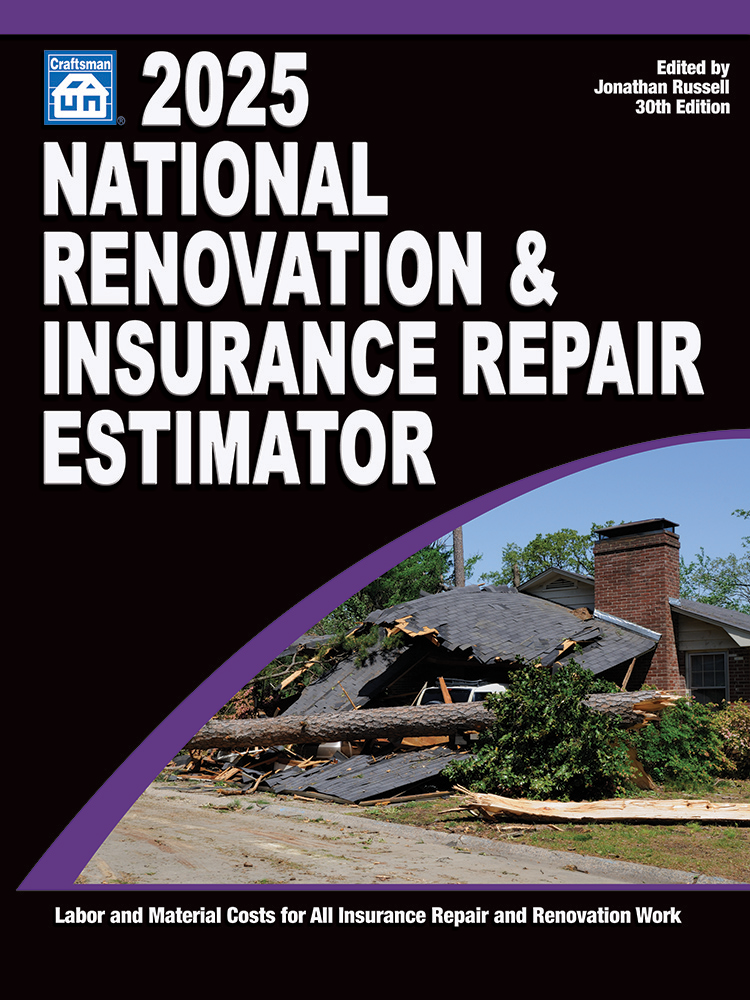Modern Marketing to Insurance Agencies






Every restoration contractor seems to know an insurance agency can be a good source for referrals. Most marketers have noticed marketing to insurance agencies is becoming less productive over time. The good news is – there is a way to reverse the trend by understanding how and why it is happening.
What Changed?
What changed in insurance agent restoration project referrals game? For years now, one of the largest insurance agent trade associations in the country has been teaching members to never refer a restoration firm to their customers, along with a long list of other things to do or not do to avoid being sued by their clients for malpractice. In providing their customers with a recommendation to hire you, the insurance agent takes on some potential liability if their client is damaged in some way by something you do. From this perspective, referring you to their customers for restoration services is all downside risk for the insurance agent. The professional errors and omissions loss prevention class is taught to thousands of insurance agency managers every year and has a lot to do with your decreasing project referrals from insurance agencies.
The Positive Side
There is a positive side to the risk management message. In that same errors and omissions loss prevention class mentioned above, insurance agency managers are taught it’s a bad idea to leave their customers ignorantly uninsured for fungus/mold/bacteria related losses caused by the “mold exclusion” in virtually every insurance policy they sell.
Today, 95 percent of their commercial customers who own or manage commercial property are ignorantly and needlessly uninsured for mold/bacteria related losses. By helping insurance agents avoid the uninsured mold/bacteria loss exposure in their customer base, a restorer can become an integral part of an insurance agency’s risk management strategy. As an added benefit, the restorer can help the insurance agency produce new income through the sale of needed environmental insurance policies to their customer base of commercial property owners. By harnessing the same risk management forces that are driving the decline in insurance agent referrals for post-loss restoration jobs, a restorer can gain more marketing leverage within an insurance agency than has ever been achievable in the past.
Get an Agency’s Attention
To get insurance agencies to pay attention to your marketing message today, you need to do more than deliver donuts and business cards to the reception desk or claims person. You need to become relevant to the insurance agent’s business. This is easier to do than you might think.
Commercial property insurance buyers have the same problems with their insurance coverage that remediators do for claims associated with pollution, fungus, bacteria and, by default, Category 3 water. The property and liability insurance policies sold to a school system, condominiums, apartments, a hotel or a shopping mall have the same pollution/fungus/mold/bacteria exclusions a mold remediator has. As a result of these exclusions, a water loss on a commercial property associated in any way or in any sequence to a speck of fungi or bacteria is almost always not adequately insured today.
For example, most commercial property insurance policies today technically have a sublimit of less than $25,000 to pay for the entire loss if a drop of Category 3 water is involved in a water loss.
For the same reasons a restoration contractor needs a customized Contractors Environmental Liability insurance policy matched to their general liability insurance coverage, a property owner needs a customized Environmental Impairment Liability insurance (EIL) policy to fill the gaps in insurance coverage created by universal coverage restrictions for fungus and bacteria related losses today.
Having Coverage & A Plan of Action
In my insurance brokerage firm, we have private labeled a customized environmental insurance product which we call the Property Environmental Risk Management (PERM) product line to specifically target commercial properties. Our PERM product line combines a customized environmental insurance policy, with a pre-placed drying agreement to create affordable EIL insurance policies for commercial insurance buyers. The availability of environmental insurance on commercial property is not limited to the PERM product line. The EIL insurance for commercial properties is widely available through thousands of sellers in the U.S. and the premium credits could be duplicated by a good insurance product developer. For this article, I will use the term PERM as a conceptual insurance product to explain why it connects restoration services to the risk management needs of insurance agencies.
The PERM product line is a custom crafted environmental insurance policy designed to be sold through local insurance agents to cover a portfolio’s commercial properties. A “Water Intrusion Loss Mitigation Plan” is a critical loss control component in our PERM product line.
A Water Intrusion Loss Mitigation Plan is essentially a preplaced drying agreement with an IICRC certified firm. The plan contains a commitment by the restoration firm will show up at a water loss quickly. An effective Water Intrusion Mitigation Plan can be as simple as a qualified restorer agreeing to show up with drying equipment within a few hours of being called.
Insurance Agents Need Your Help
With a 95 percent fundamental coverage defect rate on the insurance coverage for fungi and bacteria-related losses in their commercial property client base, insurance agents need some help in getting their customers insured for water losses involving mold/bacteria or at least not leaving them ignorantly and needlessly uninsured for these losses. As a trained water mitigator you can offer an insurance agency a great deal of assistance in reducing the professional liability loss exposure of insurance agents.
A property owner can cut the cost of their environmental insurance on their buildings in half, and the limits of insurance available for losses related to microbial matter by at least ten-fold if they have a Water Intrusion Loss Mitigation Plan the insurance company providing the PERM insurance product will accept.
The biggest barrier to success in the promotion of Water Intrusion Loss Mitigation Plans to the customers of insurance agents is that most agents today are oblivious to their need for help in this area. This is because when the insurance companies slammed “toxic mold” exclusions into virtually every property and liability insurance policy sold after 2005, nobody told the insurance agents how the new exclusions worked. Therefore, the agents have not told their commercial property owners they are uninsured for these common losses. In the past, there was no place for insurance agents to learn indoor environmental risk management and insurance.
A Modern Marketing Message to Insurance Agents
Here is a restoration company’s marketing message to insurance agents that will be music to the agents’ ears:
“Through our Water Intrusion Loss Mitigation Services, we can help your commercial property owners obtain environmental insurance covering mold and bacteria at significant premium reductions”.
I am an insurance broker and own a national award-winning insurance agency. Any services vendor coming into my office with a message like that and I am going to listen. Reducing my client’s insurance costs through better loss control is immediately relevant to me. It gives me a competitive advantage over other insurance brokers.
Reducing a customer’s insurance premiums will be relevant to every insurance agent in the country, if the agent has any understanding about mold/bacteria exclusions. The problem is most insurance agents do not, yet. The leading insurance education providers in the U.S. are trying to enlighten them through CE classes, webcasts and articles in their trade journals. More has been done on the educational front of this topic in the past 12 months than over the past 12 years combined.
You do not need to know very much about the commercial insurance packages on property owners to deliver this message. Think of the preplaced drying services message as the bait you are throwing out into the lake. Once you get a nibble, it is a good idea to exit the technical insurance discussion and refer the interested insurance agent to the wholesale insurance broker you are working with on the PERM concept insurance product line to reel the agency prospect in for you.
Marketing Leverage
One major advantage is marketing leverage. One commercial insurance agency can represent hundreds of property owners who have thousands of properties. One sale to the insurance agency manager accesses thousands of commercial properties for the restoration firm.
Another point of leverage is who in the agent’s customer base of property owners is making the decision on which restorer gets hired. Take for example a city with six hospitals and clinics, all with one owner. Chances are each facility manager will have their own go-to restoration firm for water intrusion events. The marketer of the restoration services would have to maintain six facility manager relationships to secure the drying work for all six hospitals. However once a “Water Intrusion Loss Mitigation Plan” becomes a requirement for the PERM insurance product line, it will be the CFO who makes decisions on insurance making the call on who provides drying services. The CFO could lose significant insurance premium reductions and coverage expansions without an insurance company-approved Water Intrusion Loss Mitigation Plan. That connection back to the environmental insurance coverage with millions of dollars of potential insurance coverage on the buildings, potentially being compromised based on the restoration vendor chosen, will usually leave the CFO holding trump cards over the facility managers in deciding who the water mitigation vendor is going to be.
By making an insurance agency aware that your Water Intrusion Loss Mitigation capabilities make properties insurable under a Property Environmental Risk Management type insurance policy at affordable rates, you will be able to:
- Secure solid first response calls, in portfolios of commercial property before there is an insurance claim;
- Make the value propositions of your competitors irrelevant;
- Make the incumbent positions of your competitor’s sales efforts irrelevant;
- Take price off the table in the selection criteria for drying services.
Winning the Insurance Agency Marketing Game
If a property owner can show their environmental insurance company they have a plan to quickly respond to a water loss, a plan that the environmental insurance company approves of, their environmental insurance rates can be cut in half and the amount of coverage for mold and bacteria will usually increase by at least ten-fold at no additional premium. With benefits like this, you would think every restorer would be pitching the benefits of a water intrusion loss mitigation plan to insurance agents.
Most restorers are not going to be able to teach insurance agents the technical aspects of insurance coverage, especially when it comes to fungus and bacteria exclusions. This is a complex subject for the agents. However, by presenting the potential to reduce the EIL insurance costs in the agent’s customer base by half and then referring the agent to someone who can help them understand the coverage issues solved by the PERM product concept, the door should be open in the agency for the restorer to be the go-to firm for all of the agencies first response drying calls from commercial property owners.
The modern insurance agency marketing goal for a restorer is to present the benefits that preplaced drying services can create by making environmental insurance affordable to the insurance agent’s commercial property customer base. Once that is accomplished, everything else falls into place for the remediator to automatically receive the first responder call by the customers of an insurance agency.
When everything works as designed, the restorer will be getting the emergency response call before the insurance agent does. This modern insurance agency marketing plan is driven by the insurance agency’s risk management needs, the same driving force that is making traditional marketing to insurance agencies less productive over time. Harness that driving force and you can make your competitors marketing pitch to insurance agencies irrelevant.
Looking for a reprint of this article?
From high-res PDFs to custom plaques, order your copy today!











